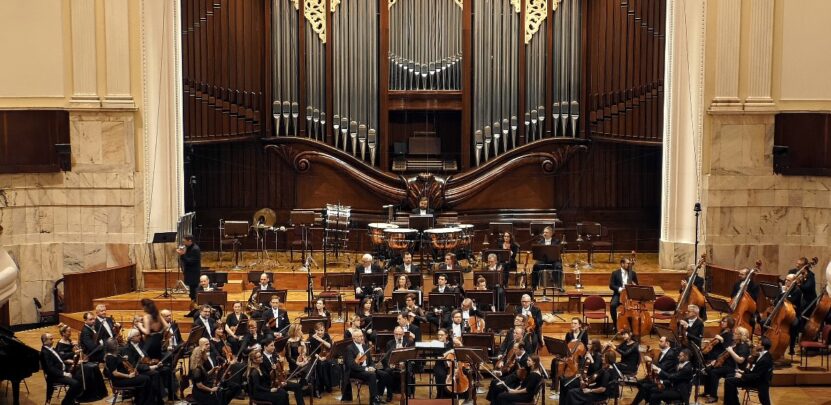A concerto, at its core, is a musical composition characterized by a dialogue between a solo instrument or group of instruments and an orchestra. This intricate interplay creates a dynamic and emotionally charged performance, showcasing not only the technical prowess of the soloist but also the collaborative spirit of orchestral music.
Originating in the Baroque period, the concerto has evolved over centuries, adapting to various musical styles and periods, yet retaining its fundamental structure and appeal.
The Historical Evolution
The concerto’s journey began in the Baroque era (around 1600-1750), with composers like Vivaldi and Bach pioneering the form. Vivaldi’s “The Four Seasons” is a quintessential example, where the violin engages in a vibrant conversation with the orchestra, painting a vivid picture of the changing seasons.
These early concertos were marked by their dramatic contrasts, with the soloist often playing virtuosic passages against a more subdued orchestral backdrop.
The Classical Period
As we moved into the Classical period (1750-1820), the concerto matured with composers like Mozart and Beethoven. Mozart’s Piano Concertos, for instance, are celebrated for their lyrical melodies and elegant interplay between the piano and orchestra.
Beethoven then pushed the boundaries further, infusing his concertos with a heroic and almost symphonic quality, as evident in his famous “Emperor” Concerto.
Romantic and Beyond – Emotional Depth
The Romantic era (1820-1910) witnessed concertos becoming more expressive and emotionally charged. Composers like Brahms and Tchaikovsky composed concertos that were not just showcases of technical skill but also profound expressions of deep emotions.
The 20th century saw even more diversity, with composers like Prokofiev and Shostakovich bringing in elements of modernism and experimentation.
Genre’s Structure
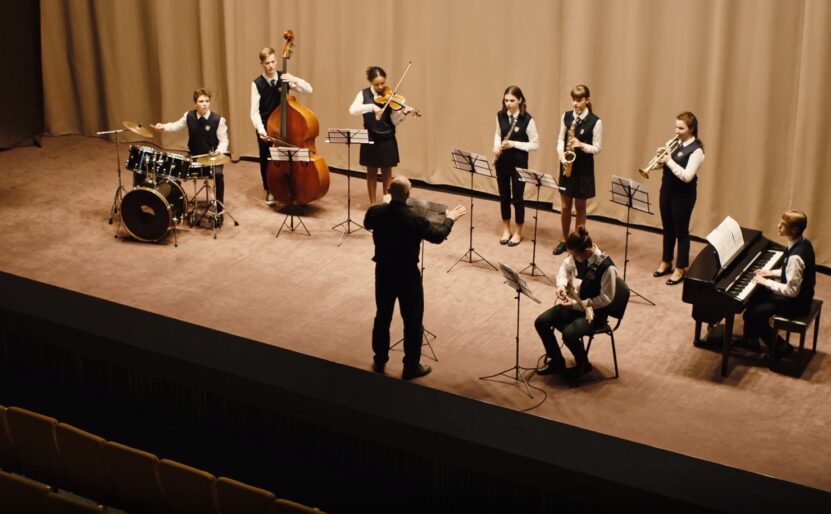
Traditionally, a concerto is structured in three movements – fast, slow, and fast. This format allows for a journey from energetic and lively to introspective and serene, and back to lively. Each movement has its unique character and role in the overall narrative of the concerto.
The Role of the Soloist and Orchestra
In a concerto, the soloist and orchestra are engaged in a continuous musical dialogue. The soloist typically displays technical virtuosity and emotional expression, while the orchestra supports, contrasts, and sometimes even challenges the soloist.
This interplay is the heart of the concerto experience, creating moments of tension, resolution, and harmony.
Cadenzas: The Soloist’s Showcase
A cadenza, typically in the first or last movement, is a section where the soloist plays alone, showcasing their skill and creativity. Originally improvised, most cadenzas are now written out by the composer or the soloist.
This is the moment where the soloist can truly shine, free from the structural constraints of the orchestra.
Celebrating Iconic Composers and Their Works
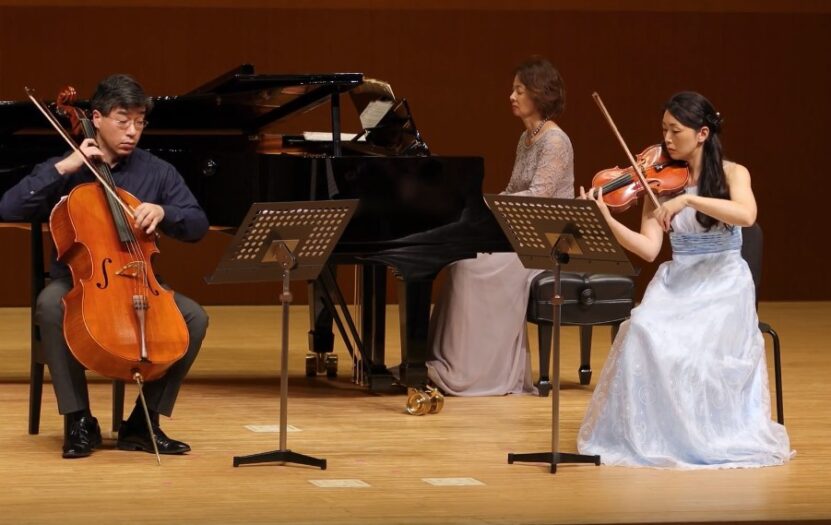
Here are a few remarkable instances of composers who have penned concertos.
Vivaldi and The Four Seasons
Antonio Vivaldi, an Italian Baroque composer, revolutionized the concerto with his masterpiece “The Four Seasons.” Each of the four violin concertos in this work represents a season, filled with vivid soundscapes that depict scenes from nature.
Vivaldi’s ability to paint pictures with music was groundbreaking, setting a high bar for future concertos.
Beethoven’s Innovation
Ludwig van Beethoven, a key figure in the transition from the Classical to the Romantic era, brought a new depth and scale to the concerto. His Piano Concerto No. 5, known as the “Emperor Concerto,” is particularly notable for its grandeur and the innovative way it introduces the piano at the very beginning, breaking traditional norms.
Tchaikovsky’s Emotional Depth
Pyotr Ilyich Tchaikovsky’s Violin Concerto in D major is a pinnacle of Romantic expression. Known for its emotional intensity and technical demands, this concerto pushes the violin to its limits, creating a deeply moving and exhilarating experience for both the performer and the audience.
Evolution and Relevance
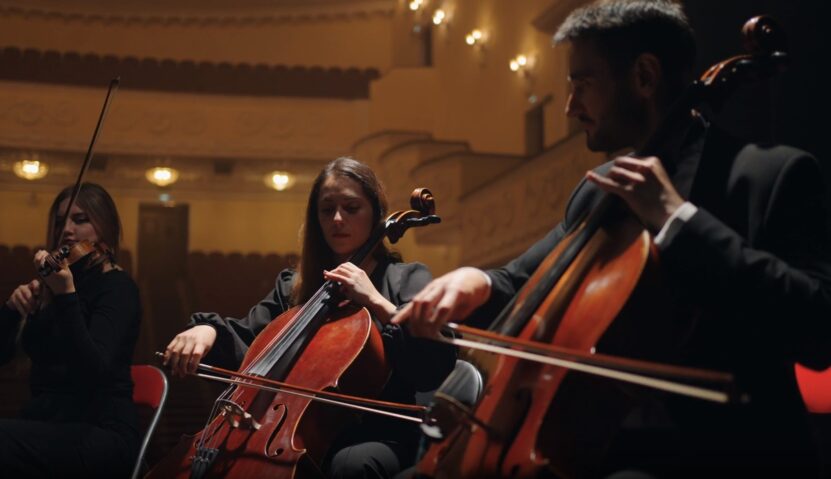
In the 20th century, the concerto continued to evolve, with composers like Sergei Prokofiev and Dmitri Shostakovich incorporating modern harmonies and rhythms, reflecting the turbulent times they lived in. Their concertos often featured a mix of traditional romanticism with a new, often dissonant, modern sound.
Contemporary Concertos: Breaking Boundaries
Today, contemporary composers are further pushing the boundaries of the concerto form. Composers like John Adams and Philip Glass have brought minimalist and post-modern elements into their concertos, creating works that are both reflective of our times and timeless in their appeal.
In Film and Media
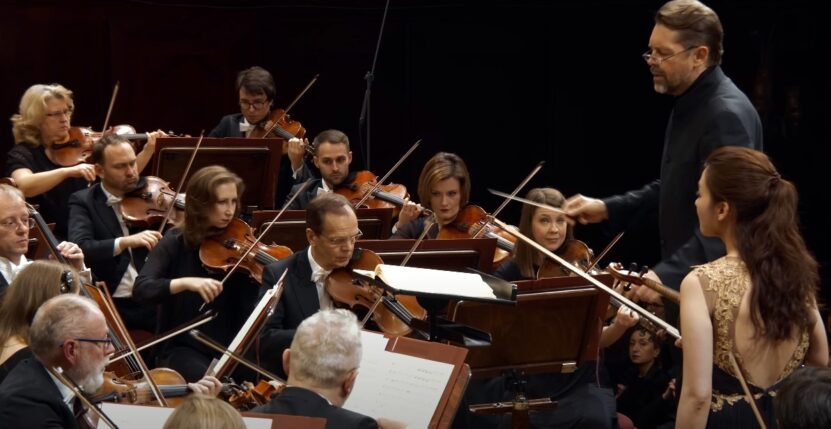
The influence of the concerto extends beyond the concert hall into the realms of film and media, where its dramatic and emotive qualities have been effectively harnessed. The use of concertos in film scores and soundtracks has become a powerful tool for filmmakers, enhancing the narrative and evoking deep emotional responses from audiences.
Concertos in Film Scores
In cinema, the concerto has found a unique place. Composers often use concerto movements or their stylistic elements to underscore pivotal scenes.
The solo instrument’s voice, set against the backdrop of the orchestra, can mirror a character’s journey or the central themes of the film. For example, the use of a piano concerto might highlight a character’s isolation or internal struggle, while a violin concerto could underscore a character’s passionate journey.
The Concerto as a Narrative Device
Beyond mere background music, concertos in films often serve as narrative devices themselves. They can reflect the emotional arc of a story, with their three-movement structure paralleling the traditional narrative arc of setup, confrontation, and resolution.
This alignment allows the concerto to be more than just an accompaniment but an integral part of the storytelling process.
Popularizing Classical Music through Media
The incorporation of concertos in films and television has also played a significant role in popularizing classical music among broader audiences. Many people are introduced to the beauty and complexity of concertos through their favorite movies or shows, leading to a deeper appreciation and exploration of classical music.
Concertos in Video Games and Virtual Reality
In the realm of video games and virtual reality, concertos are being used to create immersive and emotionally engaging experiences. The dynamic interplay between the solo instrument and the orchestra can heighten the sense of drama and urgency in gameplay, or provide a soothing, contemplative backdrop to more serene environments.
Role in Education and Society
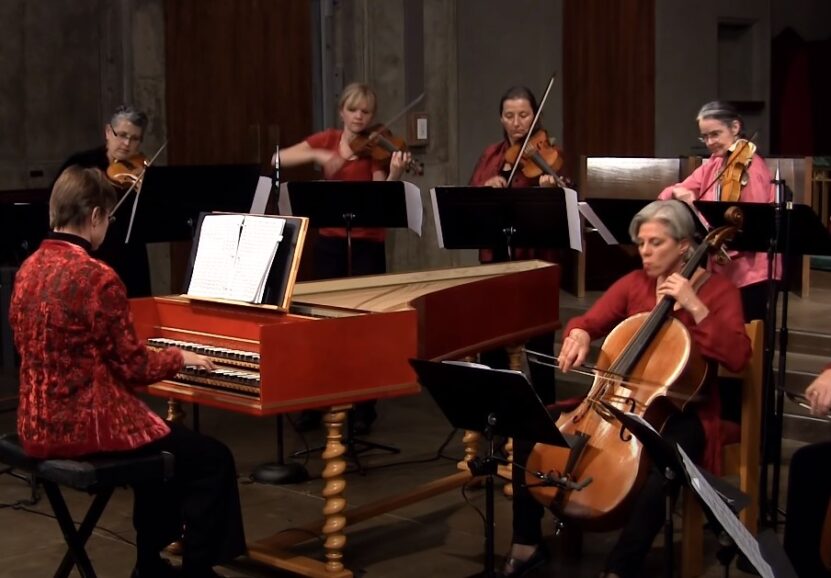
Concertos are not just for professional musicians; they play a significant role in music education. Young musicians often study concertos to develop their technical skills and emotional expression.
For audiences, concertos serve as a gateway to classical music, offering an engaging and often thrilling listening experience.
The Social Impact of Concertos
Beyond the concert hall, concertos have a broader social impact. They bring communities together, often being featured in important public events and celebrations.
They also serve as a cultural bridge, introducing listeners to the musical traditions and histories of different eras and regions.
FAQ
Can a concerto be composed for an unusual or non-traditional solo instrument?
Yes, while concertos are traditionally composed for instruments like the piano, violin, or cello, composers have written concertos for a wide range of instruments, including the saxophone, marimba, and even electronic instruments, showcasing the versatility of the concerto format.
How does a concerto differ from a symphony?
A concerto primarily focuses on the dialogue between a soloist (or a group of soloists) and the orchestra, highlighting the soloist’s virtuosity. In contrast, a symphony is a larger work for an orchestra without a featured soloist, emphasizing the collective sound and interplay of the orchestra sections.
Are there concertos written for multiple soloists?
Yes, these are known as concerti grossi or double/triple concertos, depending on the number of soloists. They feature a small group of soloists in contrast to the rest of the orchestra, creating a rich interplay of sounds and textures.
Has the role of the cadenza changed over time?
Originally, cadenzas were often improvised by the soloist, allowing for personal expression and creativity. Over time, many composers began writing specific cadenzas for their concertos, though some performers still choose to improvise or compose their own.
Can a concerto be based on a specific theme or story?
Yes, some concertos are programmatic, meaning they are based on a specific theme, story, or idea. For example, Vivaldi’s “The Four Seasons” is a famous example where each concerto represents a different season, telling a story through music.
How has modern technology influenced concerto composition and performance?
Modern technology has expanded the possibilities for concerto composition and performance, including the use of electronic instruments, digital sound processing, and multimedia elements. This has allowed composers to explore new soundscapes and create more immersive concert experiences.
Final Words
In conclusion, the concerto, with its rich history and evolving form, stands as a testament to the enduring power and versatility of musical expression. From Vivaldi’s vivid depictions of nature in “The Four Seasons” to Beethoven’s groundbreaking “Emperor Concerto,” and Tchaikovsky’s emotionally charged Violin Concerto, these works have not only showcased the virtuosity of soloists but also reflected the cultural and historical contexts of their times.
The concerto’s journey through the Baroque, Classical, Romantic, and Modern eras highlights its ability to adapt and remain relevant, continually offering fresh perspectives and challenges to both performers and audiences. In the contemporary landscape, the concerto continues to evolve, embracing new styles and technologies, thus maintaining its vital role in music education and society at large.
As a bridge between past and present, the concerto not only entertains but also educates, connecting us to our cultural heritage and inspiring future generations of musicians and music lovers alike.
